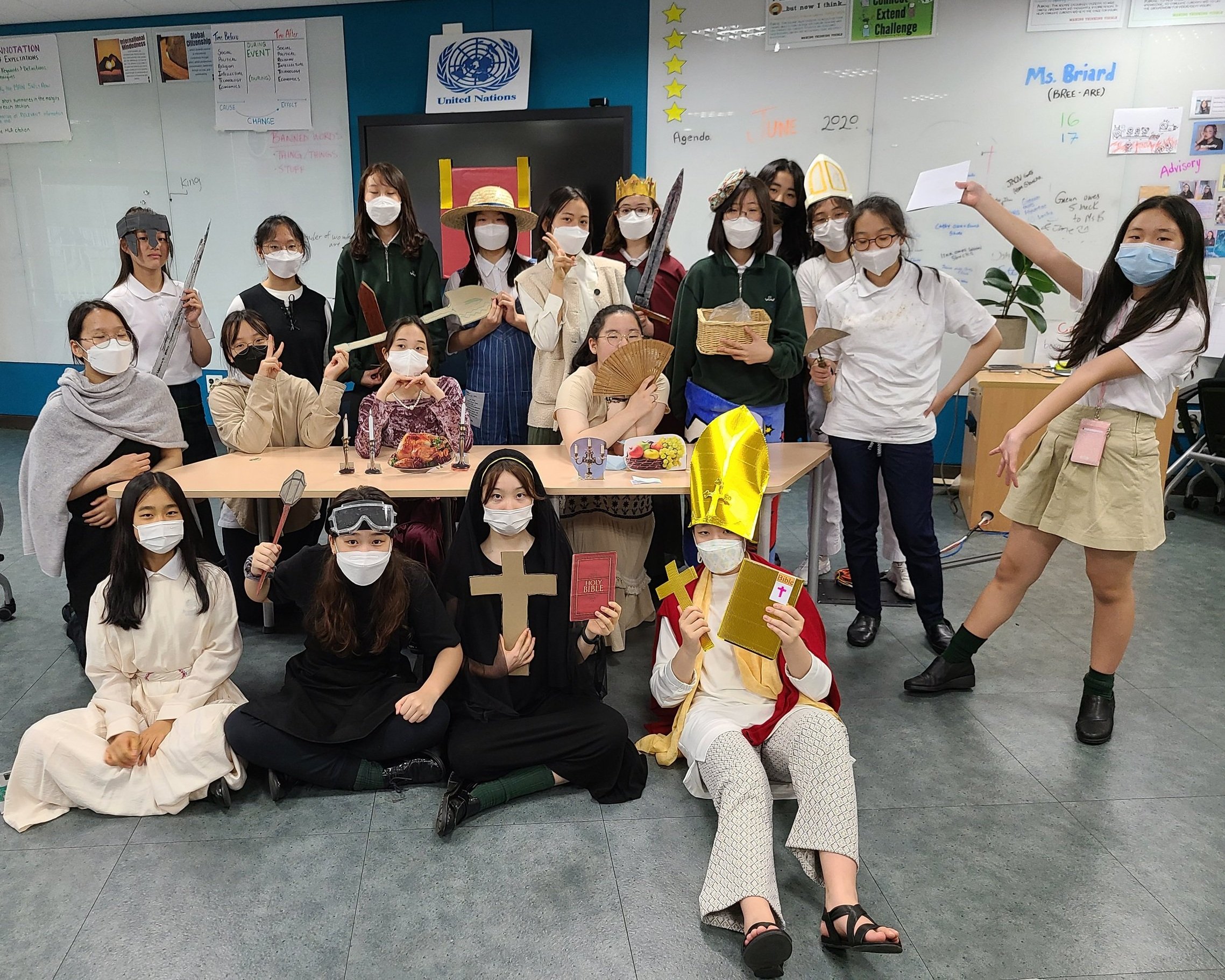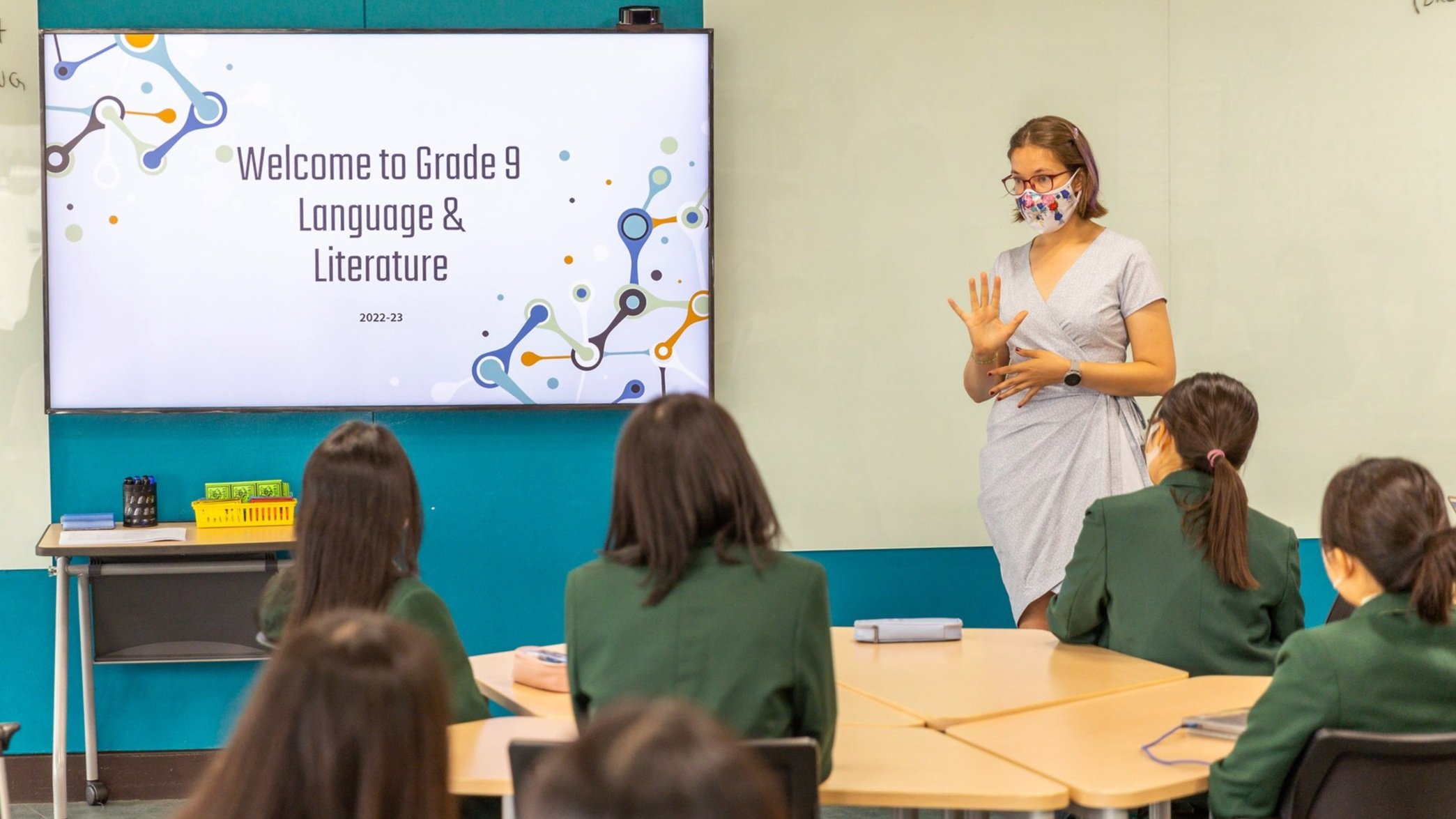
In the Classroom
Classroom Experiences & Projects
The following section outlines a selection of experiences and projects that I have conducted across grade levels in humanities classes (top section) and English classes (bottom section), including articles I wrote for school publications. Individual activities and materials are discussed and/or outlined on my teaching blog.
Humanities/Social Sciences
Human Environment Interaction at Work
Sep 3 2020, School Publication
The grade 7 students are exploring urban environments in their first Individuals and Societies’ unit. Why are cities where they are? What do settlements need? And, overall, how do humans interact with their environments?
One of our first big ideas is looking at how humans have modified their environment (M), how humans learn to adapt to their environment (A), and how humans depend on their environment (D). Over the last couple of lessons, students worked in teams to capture photograph examples of M.A.D. at work around Branksome Hall Asia. Together with their team, they explained each in a slide presentation.
Image: Students working on their M.A.D scavenger hunt activity.
Grade 7 United Nations Debate
Jan 14 2021, School Publication
“There’s only one way to learn. It’s through action.” - Paulo Coelho
This past December, the grade 7 classes adopted the perspectives of different countries in order to simulate the United Nations and discussed the impact of climate change.
“Earth has been facing a tragic crisis where the temperature rises rapidly, mainly caused by CO2 emissions,” reported student journalist Hyunkyoung Kim. Each country in attendance brought to the table their main concerns and worries and hoped to work collaboratively with the others in attendance in order to determine possible solutions.
According to the delegates, the burning of fossil fuels within the transportation and agricultural sectors constitutes a main cause of CO2 emissions. The delegates were worried about the numerous health related issues that were increasing in their countries as a result of climate change problems. “Because of more heatwaves, there has been a 200% increase from 2010 to 2016 in the number of heatwave-related deaths,” noted one delegate from India. The German delegate raised concerns about the spread of diseases and viruses due to higher temperatures in previously cooler regions while the delegates from Brazil and South Korea indicated their worry about agricultural economies that have been impacted by droughts, farming activities in Brazil, or the changing pH balance within the oceans which impacts on fisheries in South Korea.
As the discussion progressed, delegates suggested possible solutions that included the implementation of factory filtration systems to prevent gross air pollution, the introduction of restrictions on who can drive and when, the development of further renewable energy sources, and even outlined the incorporation of more community-focused action plans to encourage citizens to be more environmentally minded.
While nervous at the outset of the simulation, students spoke with increasing confidence as they raised their placards to participate in the discussion, sharing insightful ideas inspired by thorough research. The main words emphasized by the delegates throughout the debate were “encouragement” and “participation,” as noted by journalist Kim, highlighting the spirit of the discussion as students sought to find plausible solutions to this current and very real global problem.
Photos below courtesy of a G7 student acting as journalist:

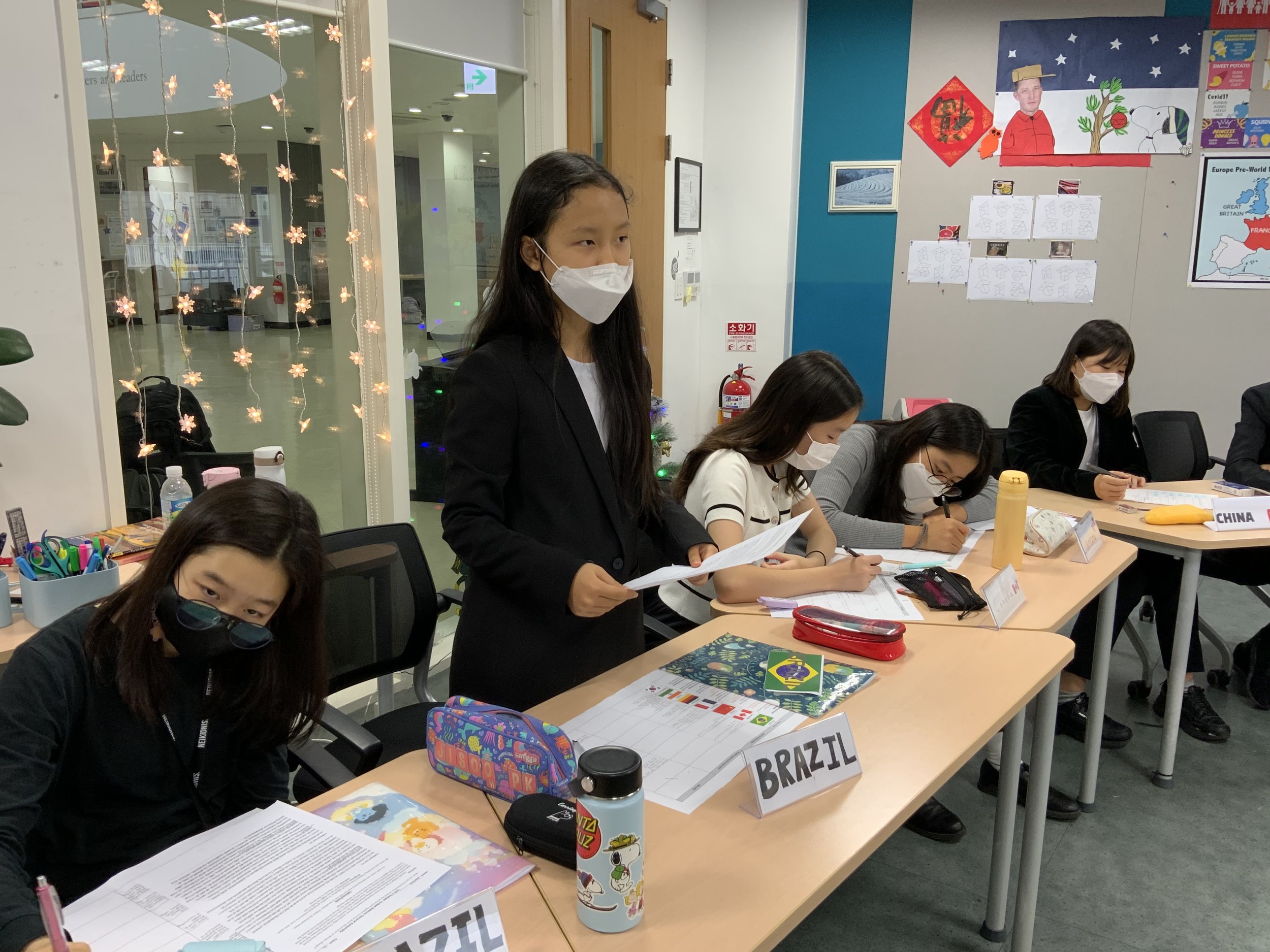
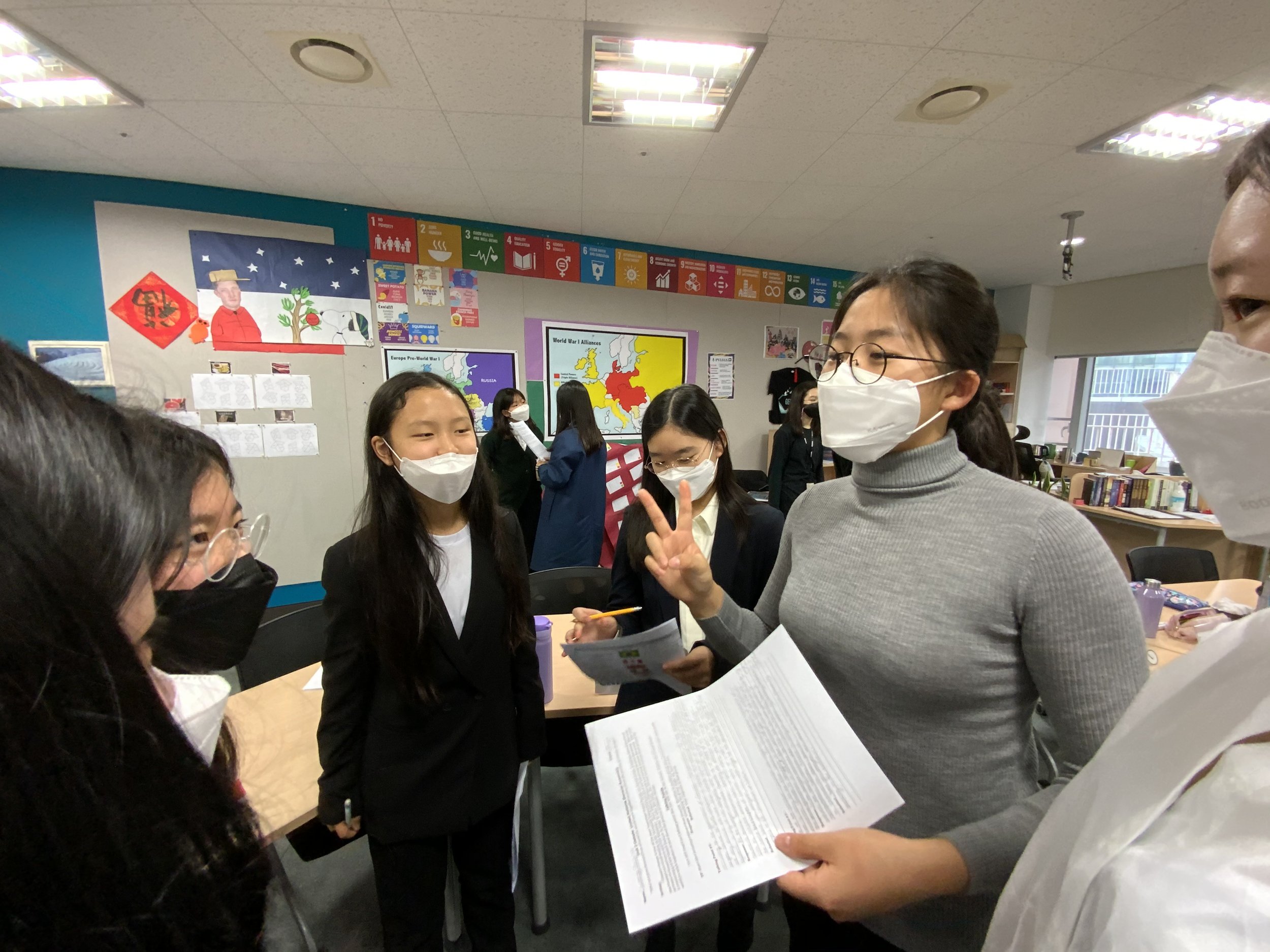
Grade 7 Middle Ages Wax Museum
In a grade 7 unit on the Middle Ages, students were exploring the power of systems: government systems, economic systems, religious systems, especially with regard to the medieval Feudal System. As part of the unit, students chose a role from the Feudal Pyramid and prepared an interactive exhibit in order to answer the debate question: To what extent do systems, like the Feudal System, controlled my life?
Each student wrote and memorized their speech and created their own props in preparing for the exhibit.
Grade 8 Pandemics & Government Response
In the wake of Covid-19, we added a unit on Pandemics into the grade 8 curriculum. To help students sort and make connections between interventions and policies, I had my students complete a class analysis of South Korea's response to the pandemic. Each student created 3-4 cards outlining the actions taken and listing the corresponding source of information. We divided our categories into political actions, business/economic actions, social/public actions, and relevant statistics. As they added them to the display, they also had to decide if the action had a positive or negative effect on containing the pandemic.
Ultimately, students had to evaluate and recommend an action plan based on what the government and people were doing. After completing the class analysis, students conducted an individual analysis of another country. With the earlier practice, it was easier for many of them to choose relevant evidence when constructing their arguments, and to draw connections between points.



Grade 8 First World War, Treaty Negotiations
The First World War is a rich topic with many potential projects. My partner teacher and I wanted our students to understand the relationship between the European countries at the time as well as the connection between cause and effect. With that in mind, we chose to re-create a version of the peace negotiations at Versailles. In preparation for these conversations, we led students through a series of activities focusing on the causes of war, the horrors of war, and Wilson’s 14 points. We then assigned students to one of 7 countries (Belgium, France, UK, USA, Weimar Republic, Austria-Hungary, and Serbia).
In our negotiations, we had three main topics for students to focus on: Reparations, European Borders, Military regulations. Over the course of the discussion, they needed to use evidence to express their demands and convince other countries that their claims are legitimate. As a final activity, students complete a critical reflection where they evaluate the fairness of a selection of the terms from the real Treaty of Versailles.
Image: Class set-up for treaty negotiations.
Grade 9 Bi-cultural Businesses
In a grade 9 business unit, students study intercultural theories (high context cultures VS low context cultures), how countries compare on the Hofstede Country Comparison, and marketing theories in order to create a business that can flourish in two separate countries. We looked at the examples like McDonalds and Starbucks to discuss how these businesses changed their menu items or other elements of their service to cater to their target markets in each cultures.
Students were assigned two contrasting countries at random and in teams designed a business and created a pitch to present in front of the rest of the class.
Grade 9 French Revolution Simulation
In a grade 9 unit exploring revolutions, we discussed the theories of causation as well as the types of revolutions. In order to help students understand how these theories apply to real revolutions, we conducted a French Revolution simulation using materials created by Brown University. The simulation is centered around the discussions of the National Constituent Assembly. I divided the class into 4 groups. Option 1 is in favour of continuing the monarchy and conserving the current regime. Option 2 wants to create a constitutional monarchy by blending the old traditions with new. Option 3 consists of the revolutionaries, inspired by the age of enlightenment, who want to completely change to a democratic systems. Meanwhile, the fourth group plays the role of angry citizens, stampeding into the assembly to demand how the three options will address their concerns and needs.
The role play challenges students to think how each group would have framed their arguments and why they would have resisted the opinions and arguments of the other groups. At the end of the experience, many of the students express their surprise at how much they enjoyed the simulation.
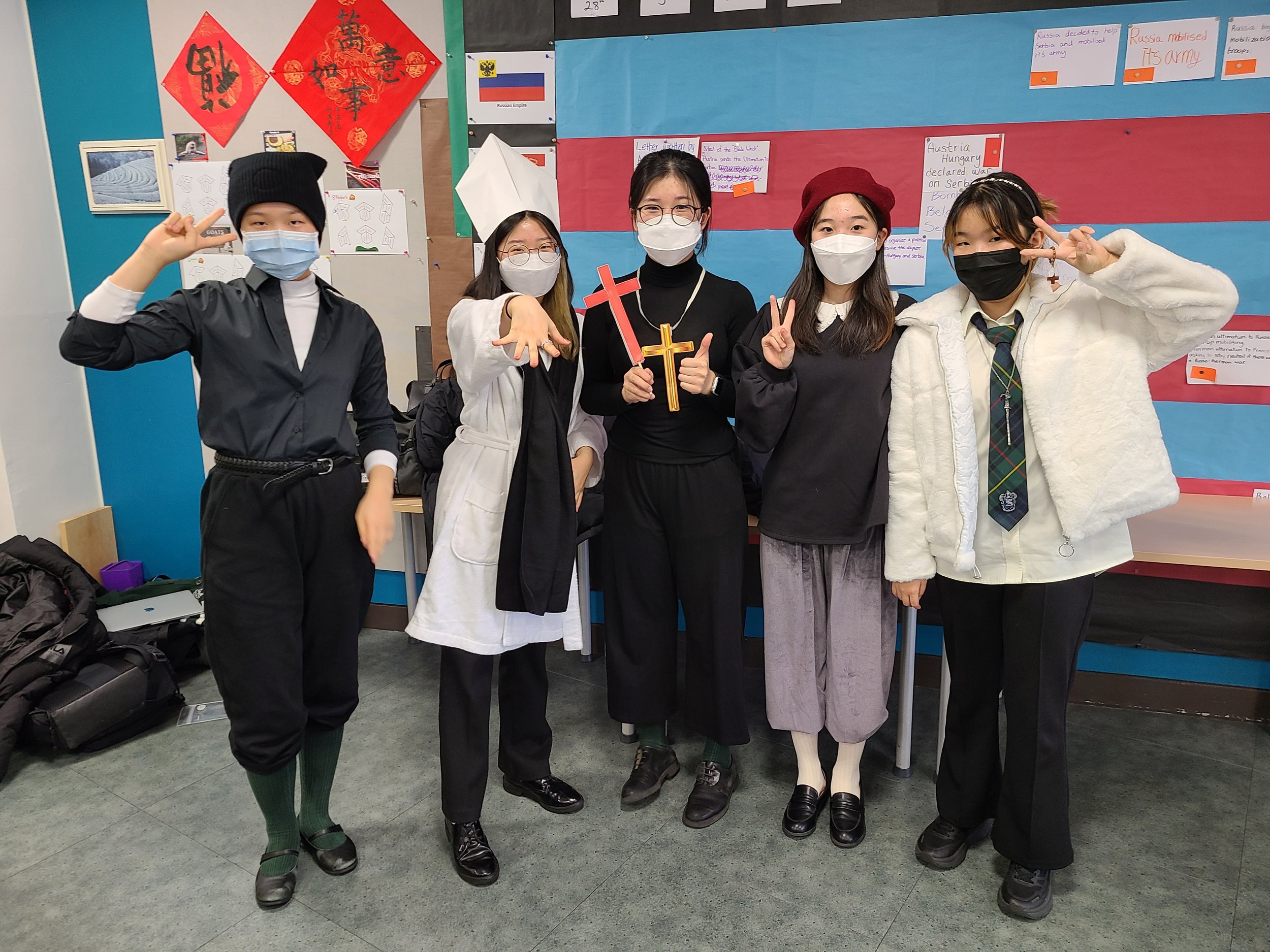
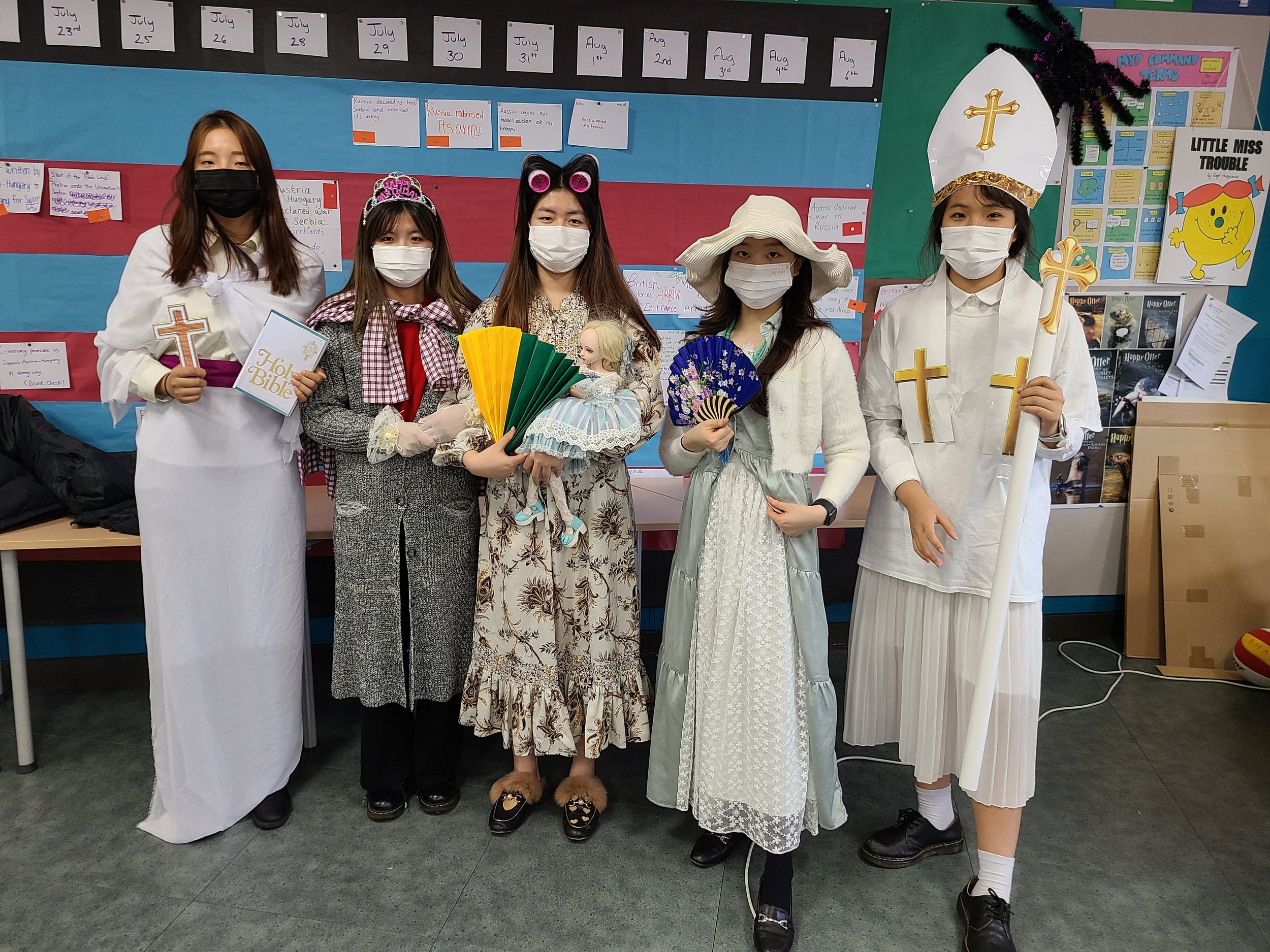
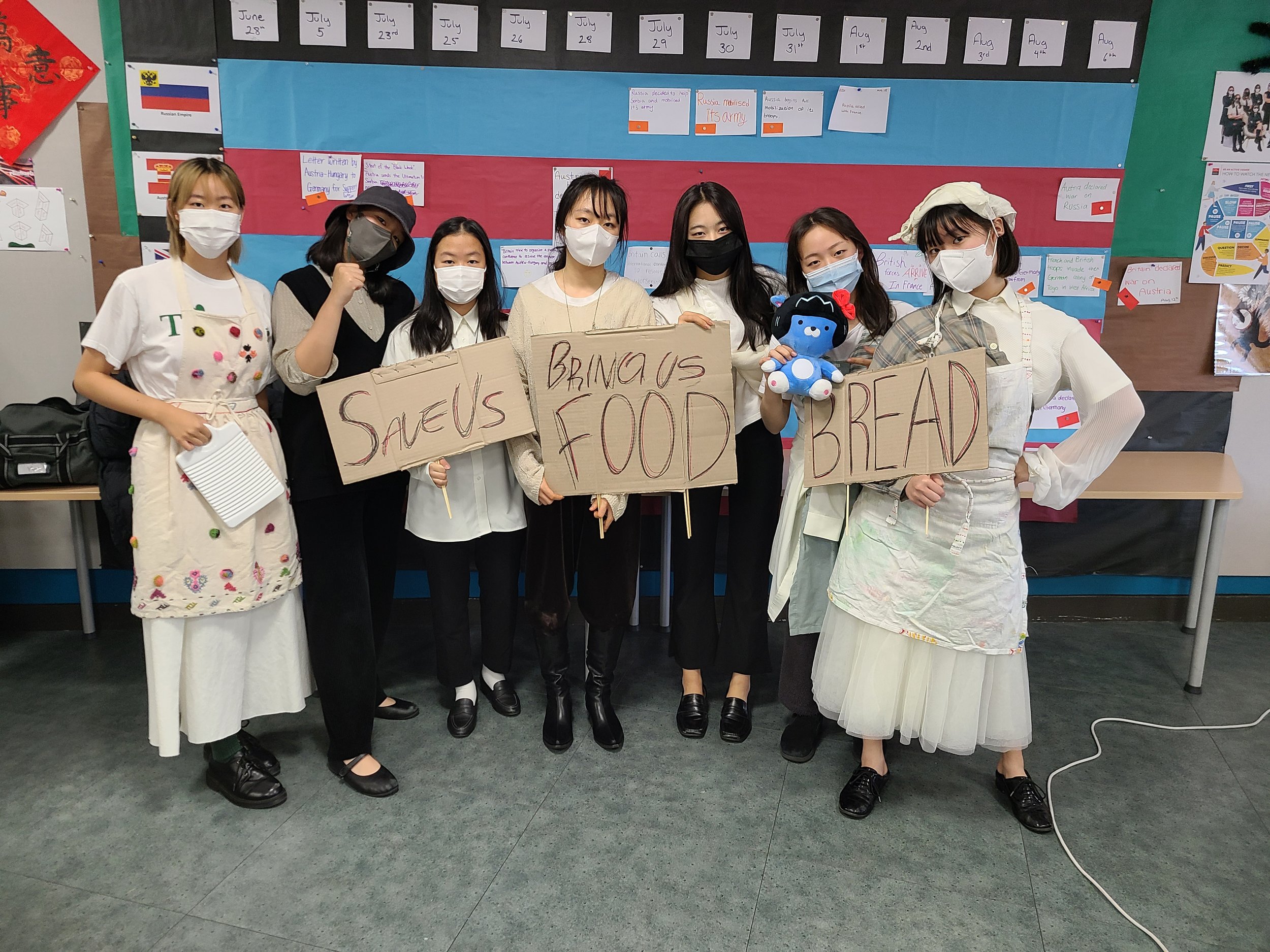

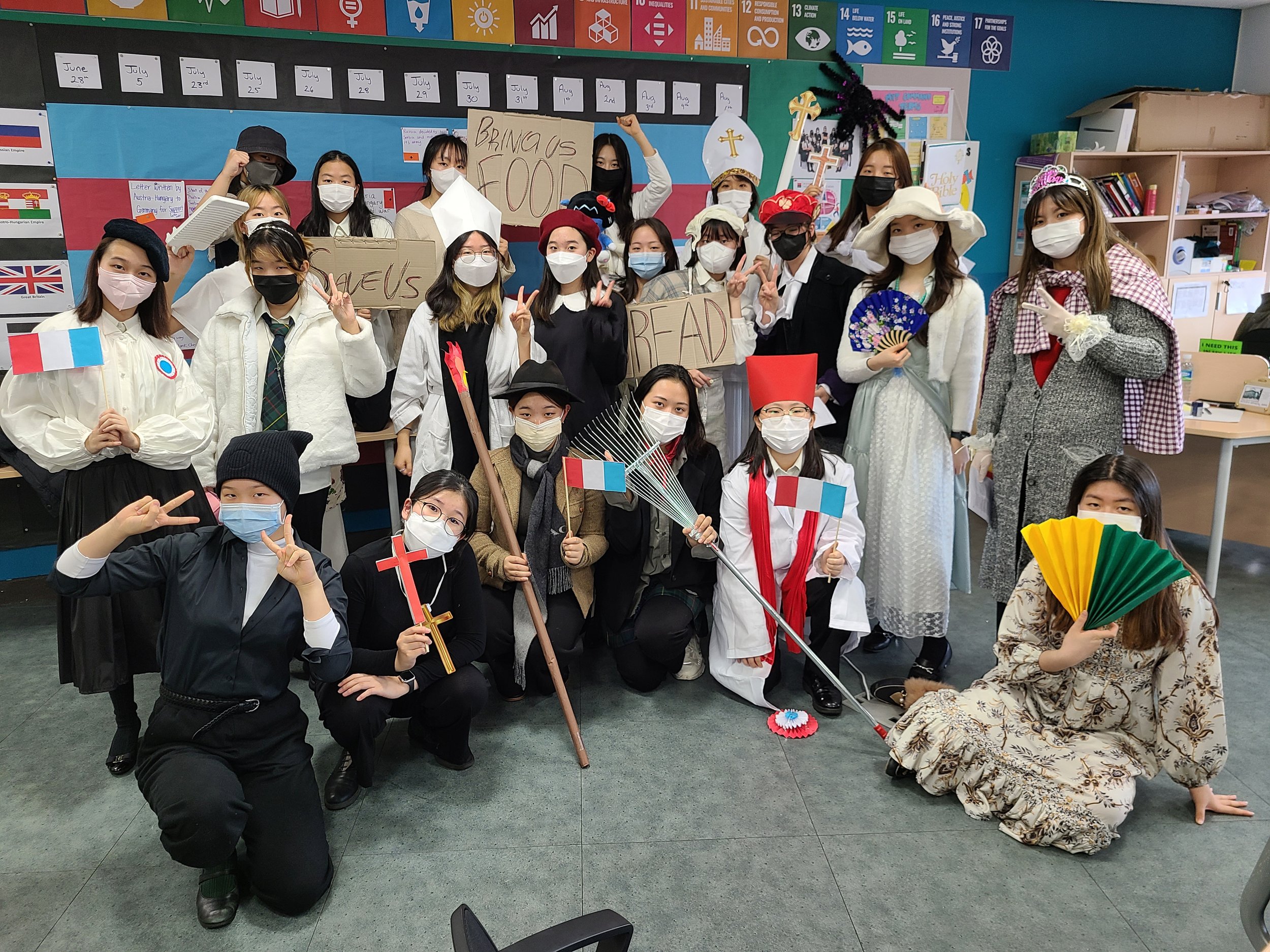
English/Language & Literature
The Grade 6 News Room
Exploring journalism within our community, grade 6s found possible stories, pitched them to their teammates, and then conducted interviews and online research to compose news articles.
As a news team, they created a name and colour scheme for their publications. One member was tasked with creating a logo. Afterward, I formatted their articles into a magazine using Adobe inDesign.
Click on the images to see each publication.
Grade 7 Literary Circles
In order to explore dystopian societies, grade 7 students worked in literary circles as they read The Giver by Lois Lowry or Uglies by Scott Westerfeld. In their groups, they created reading expectations and a plan to follow throughout the unit. During each class, they had time to discuss and ask questions about what they had read.
As the teams approached the end of their novels, they engaged in a class-wide socratic seminar to compare and contrast the themes within the two novels.
Grade 7 PSA Analysis
Grade 7 students learned about film techniques in order to analyze public service announcements related to climate change. Through discussions of camera shots/angles, audio, and tone/colour, students discussed the effectiveness of these advertisements and the overall affect on the audience.
During the unit, we discussed how to use the PEEL paragraph structure in order to explain the elements of the analysis. Before recording their analysis, students organized their ideas within a graphic organizer.
Sample products below:


